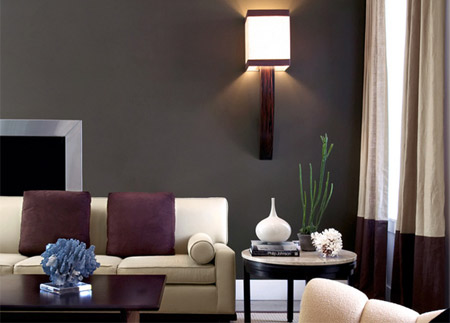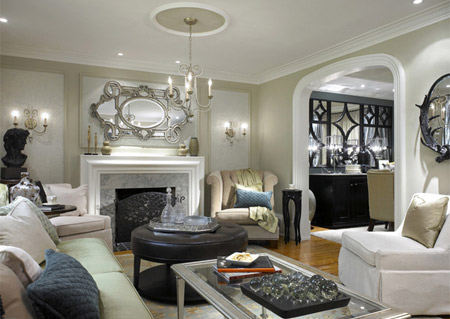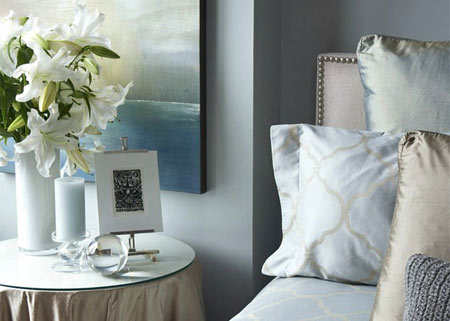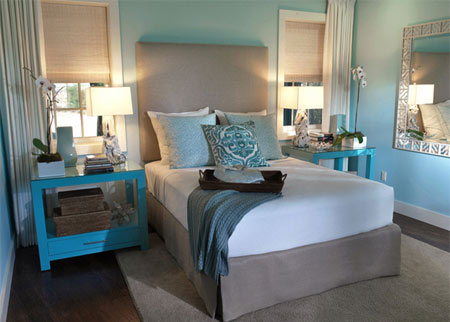How to choose a colour palette
Choosing a colour palette when decorating a home can be a difficult task, but set yourself up for success by knowing the basics of the colour wheel and how different colour schemes come together to create a harmonious and stunning room interiors.
Follow the colour principal of 60-30-10 to create an aesthetically pleasing colour scheme. Divide your colour choices into percentages: 60 percent is a dominant colour, 30 percent is a secondary colour and 10 percent is the accent colour.
What is the 60-30-10 rule?
Starting with the dominant colour used in the room - 60 applies to your main colour - in most cases this is probably going to be your colour choice for walls. Since this colour will set the overall mood of the room, you should take the time to carefully deciding what this colour will be. The secondary colour will be the 30 - and can include carpet or flooring, upholstered furniture, bedding or large rugs and ceilings. The accent colour - 10 -is mainly reserved for accessories such as cushions, thrown, painted trim, curtains, etc. It can also include a feature wall that will be painted in a different colour.
Always consider how lighting will affect your colour choices. Before finalising your selections, see how each colour will look in the room during different times of the day.
How light affects paint colour
In the home artificial lighting is used to either supplement daylight or replace it entirely.
The kinds of typical artificial lighting most commonly used include incandescent, fluorescent and halogen. The light sources in your home affects how colour appear. Incandescent and halogen lighting tends to warm up reds and yellows because the wavelengths of these artificial lights are warm.
Fluorescent light, on the other hand, is very cool lighting and enhances blues and greens, so, a blue or green paint will appear better with fluorescent lighting.
Under conditions of natural lighting, colour changes as the day progresses from morning to afternoon. Natural light also reflects differently on the various walls in a room. As an example: Stand in a room facing a window. If all the walls in the room are painted in the same colour, early in the morning the wall on your left will appear brighter. During the middle of the day the wall behind you may appear brighter, and in the afternoon the wall on your right will appear much lighter than the other walls.
When selecting paint colours for decorating it's all about balancing the type of lighting with the paint being used (matt, satin or gloss) and the impact of other colours in the space and creating harmony with these three factors. Take home colour swatches or tester pots and apply these to all the walls that are to be painted. This will allow you to view the colour at various times in the day and under artificial light.
If experimenting with too much colour is not for you, you can achieve a sophisticated and comfortable look with neutrals. There is something pleasing about coming home to a nice, quiet neutral palette. It brings peace to the soul and gives your eyes a rest. Having done a substantial amount of research for this article, the main conclusion is that there are many opinions concerning the definition of a neutral palette or colour scheme.
Some say that a neutral scheme is the absence of all colour - shades of black and grey - while others include brown. which is in fact a colour. My personal interpretation of neutral is earthy, organic colours in shades of black, brown and cream in all their hues and strengths. But that doesn't mean that you can't include colour when decorating in neutral colours. While beige is a neutral, shades of your favourite colours can also act as neutrals in a room. A neutral just needs to be a balance of warm and cool tones, like the shade of red used in this living room.
While a mixture of colors can be beautiful, too many or the wrong shades together can create a disastrous look. Follow a favourite colour scheme, like monochromatic or complementary, and stick with the 60-30-10 rule to create the perfect palette.
Adding a trendy colour to a room's palette can be the fresh take you need, but choose where you use the trend wisely. Wall colours and accessories can be easily switched out, but when purchasing furniture, choose shades that will stand the test of time.
If you really want a shortcut way to have colours that flow in your home- first choose a favourite paint colour, then use 2 other shades of that
colour from the same paint chip as your main accent and splash colours to create instant, fool proof colour flow in your home, big or small. And by using a monochromatic (similar colours) paint scheme, you will be creating a feeling of calm throughout your home.





